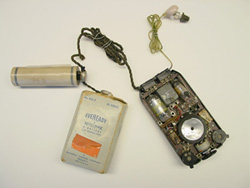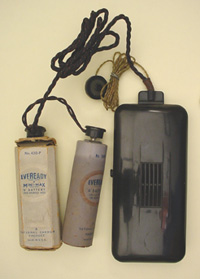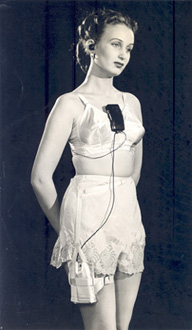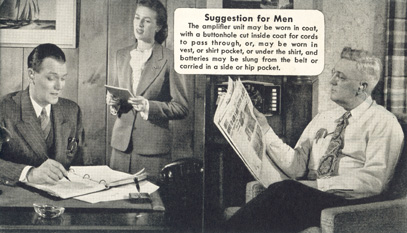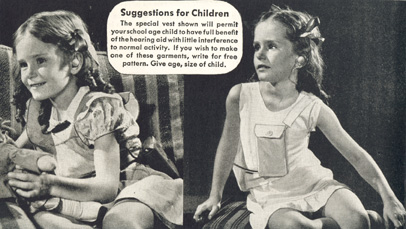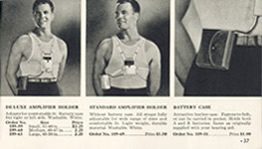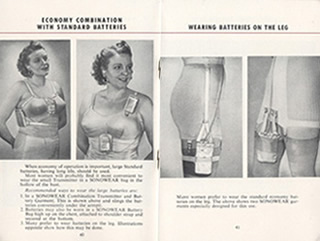Concealed Hearing Devices of the 20th Century
The introduction of vacuum tubes in the early 1920s was a major technological step in the evolution of electrical hearing aids. Vacuum tubes provided a much more efficient method of amplifying electrical signals. This efficiency translated into greater acoustic gain and hence yielded greater benefit for hard of hearing and deaf users. The early vacuum tubes were very large with two batteries required for power.
| Precision Electric Co. Table Aid, 1948 | |
|---|---|
| Like the early carbon electrical models, early vacuum tube hearing aids were large, fragile, not easily transported, and camouflaged designs were confined to tabletop appliances like this “radio.” |
During the 1930s and 40s, miniaturization of vacuum tubes allowed manufacturers to develop body-worn designs that housed vacuum tubes and microphones within a single unit, which allowed for portability. However these early body-worn hearing aids were cumbersome and still required use of batteries not housed within the hearing aid. Wires were required to connect the batteries and the earpiece to the microphone/amplifier unit.
To power a vacuum tube hearing aid, two batteries were needed: an ‘A’ battery to warm the filament in the vacuum tube and a ‘B’ battery to amplify the sound. The batteries were at least as large as the other components of the hearing aid and weighed up to 2.5 pounds. Users wore batteries in cumbersome battery holders under their clothes or in pockets with straps, and multiple thick cords connected the batteries to the earpiece and microphone/amplifier unit.
Photographs courtesy of CID |
|
As seen in these photographs batteries were strapped on various parts of the body. |
|
| Zenith introduced its first vacuum tube hearing aids in the early 1940s – the Radionic A2A in 1942 and the A3A in 1944. These photographs, from the instruction manual for the Radionic, provided suggestions for wearing the body aid and batteries. |
Courtesy of Zenith Electronics Corporation |
Courtesy of Zenith Electronics Corporation |
|
| Battery harnesses available from Zenith, 1940s | |
|---|---|
| The Zenith Radionic instruction manual also offered several pages of hearing aid accessories for sale, including these two pages of battery holders. | |
|
|


